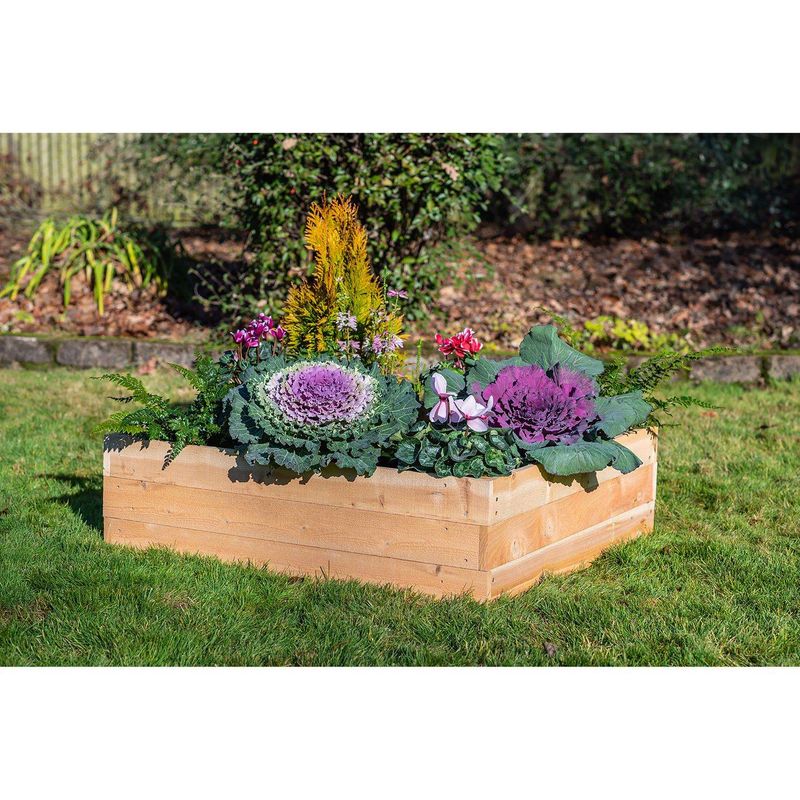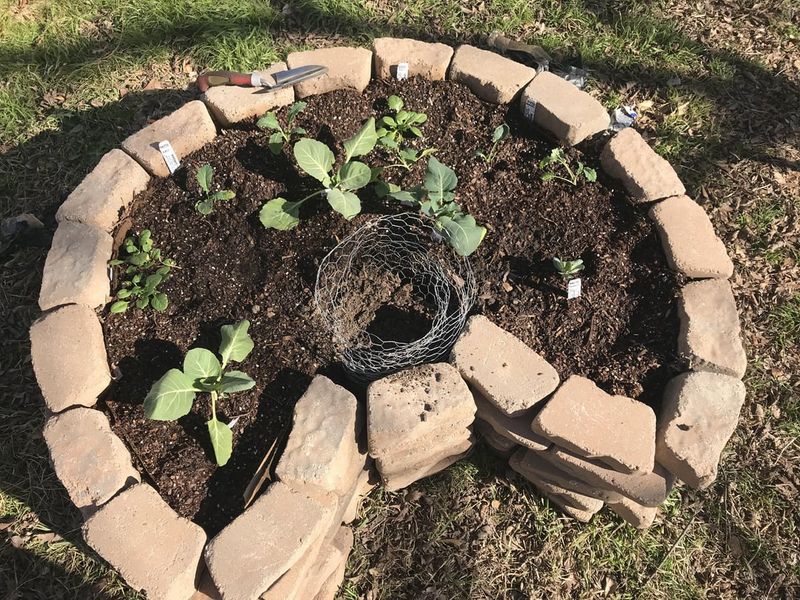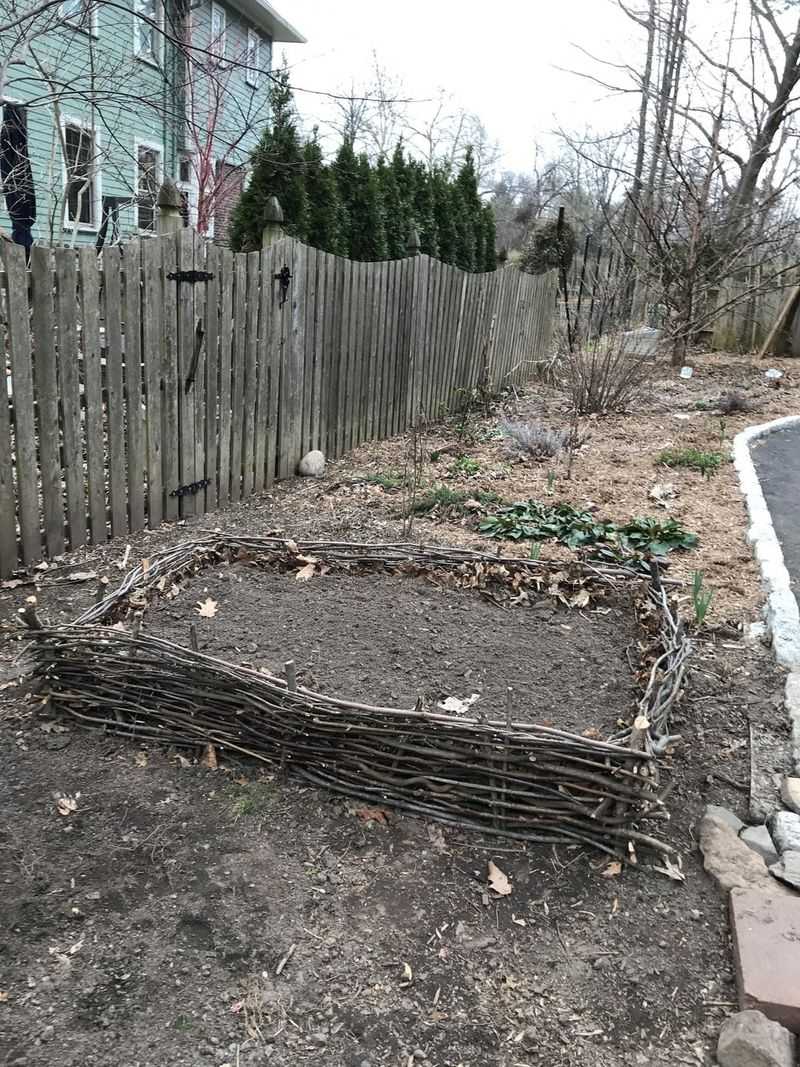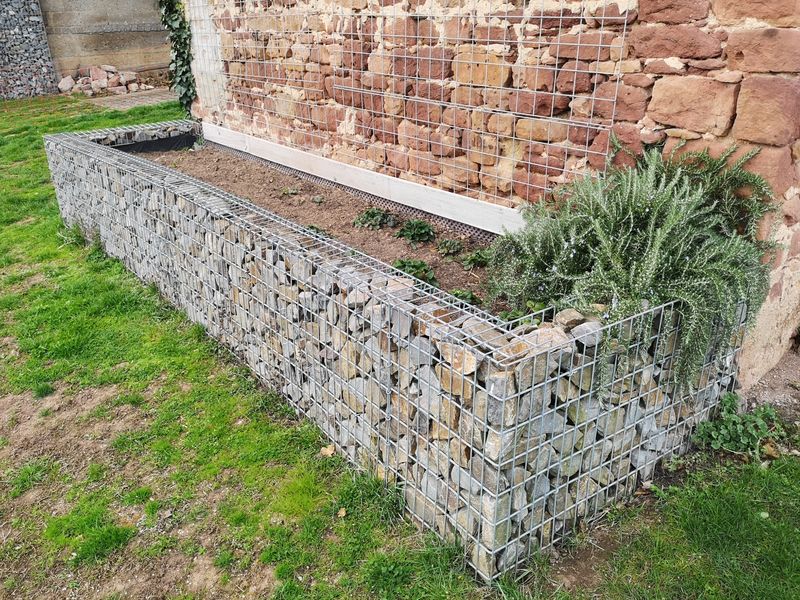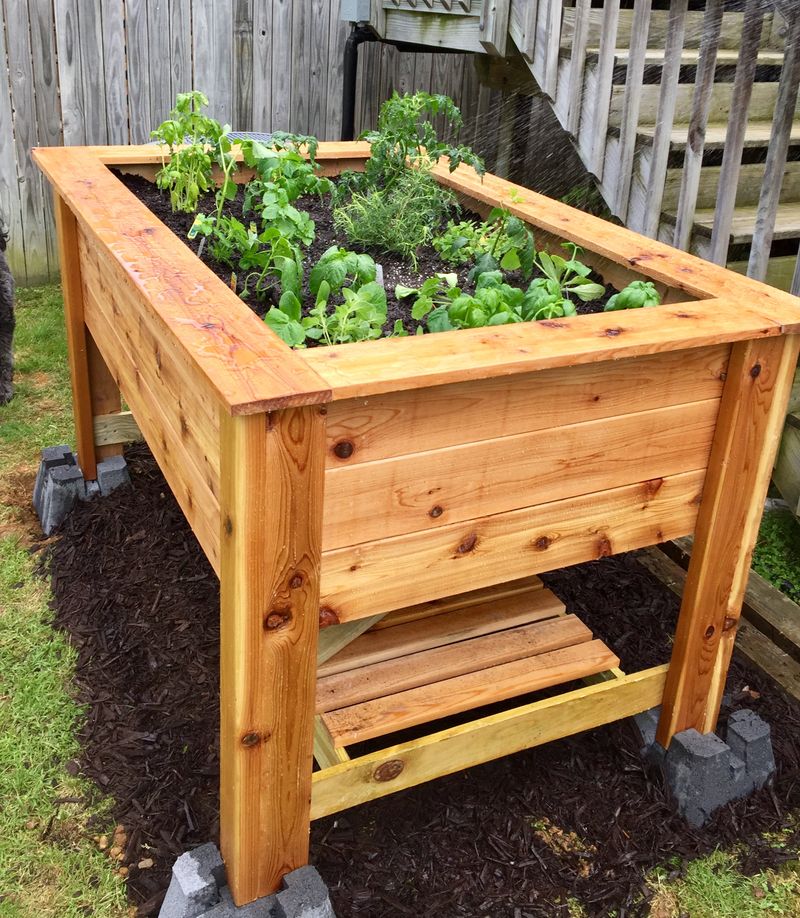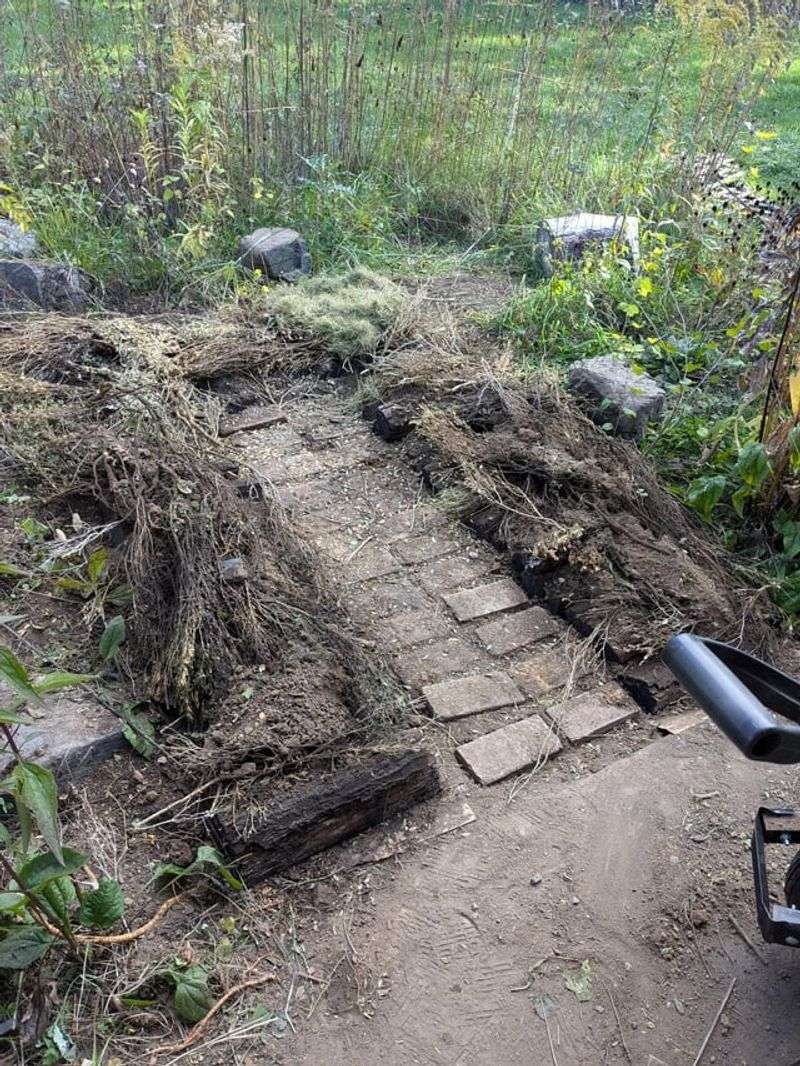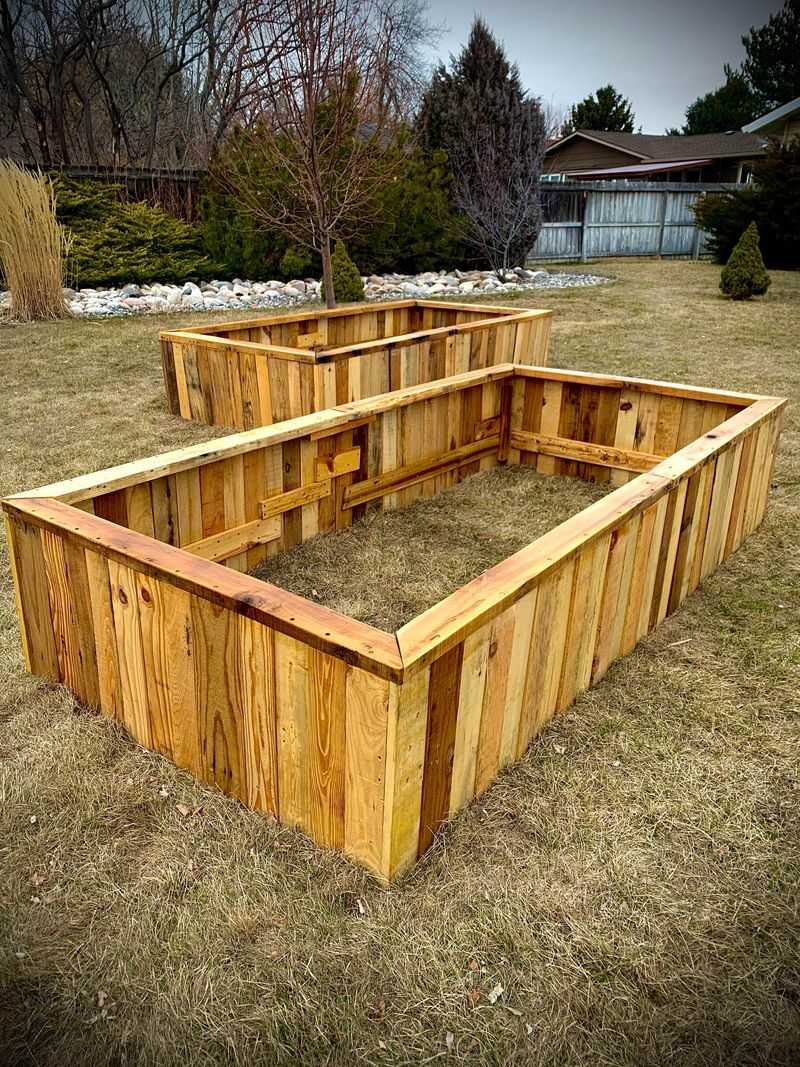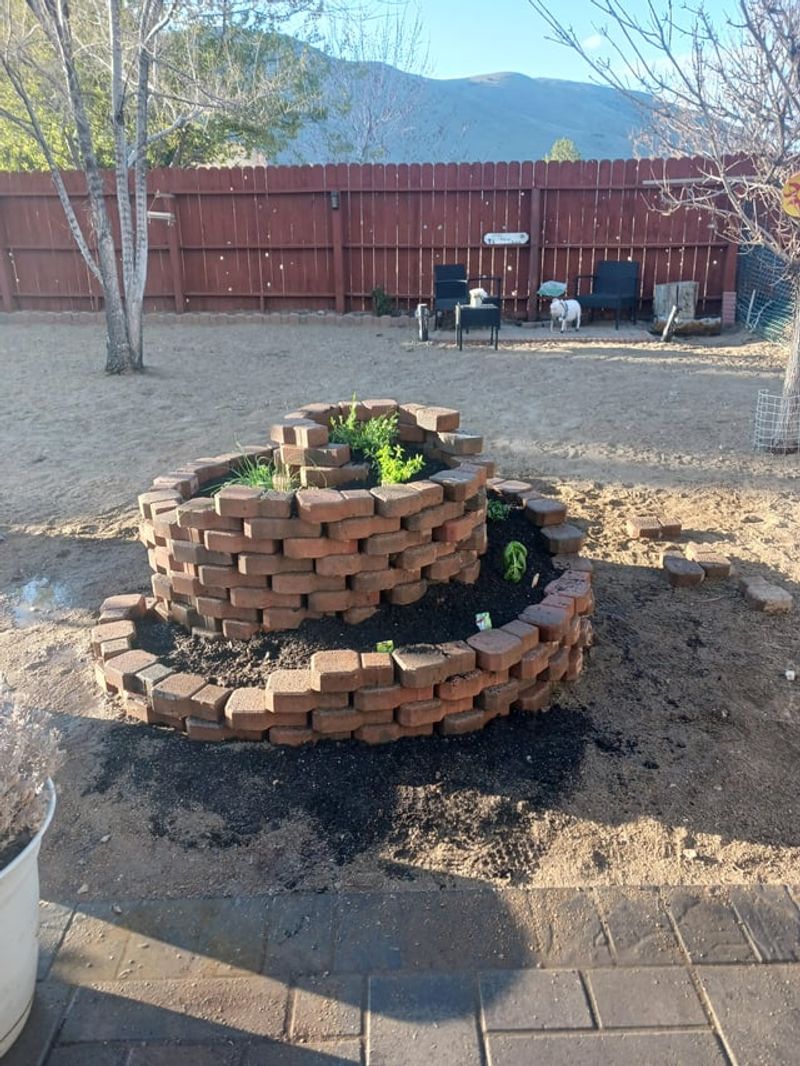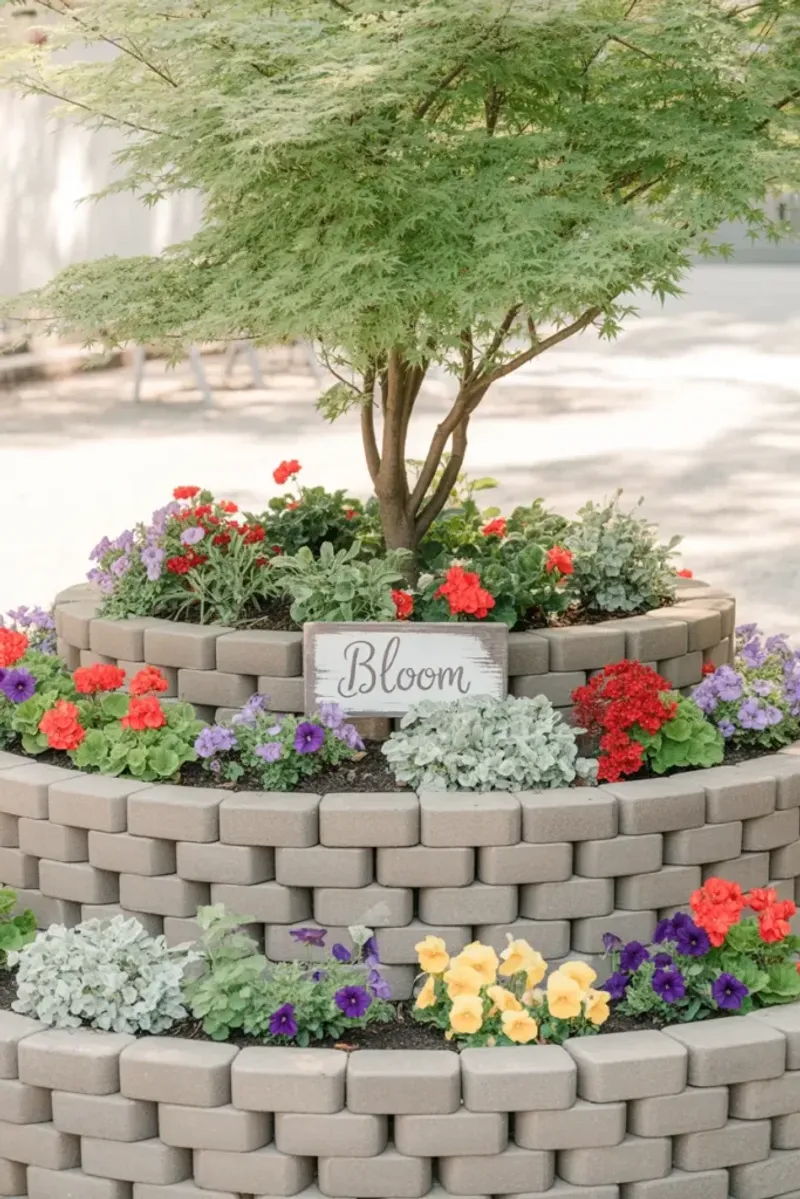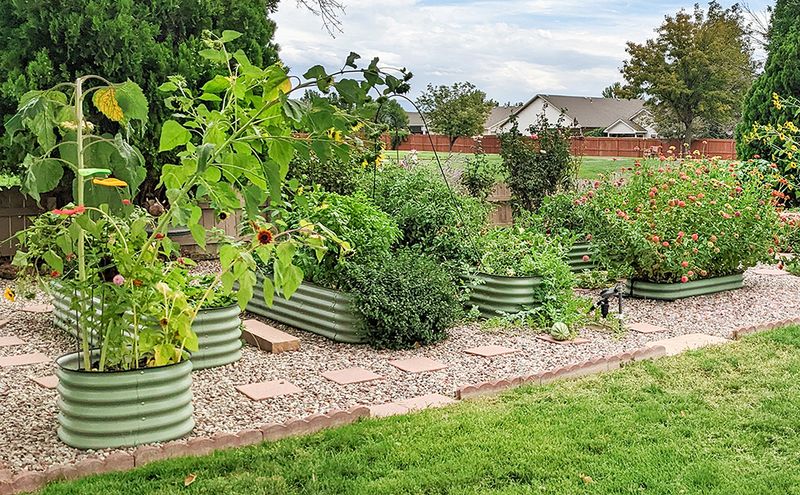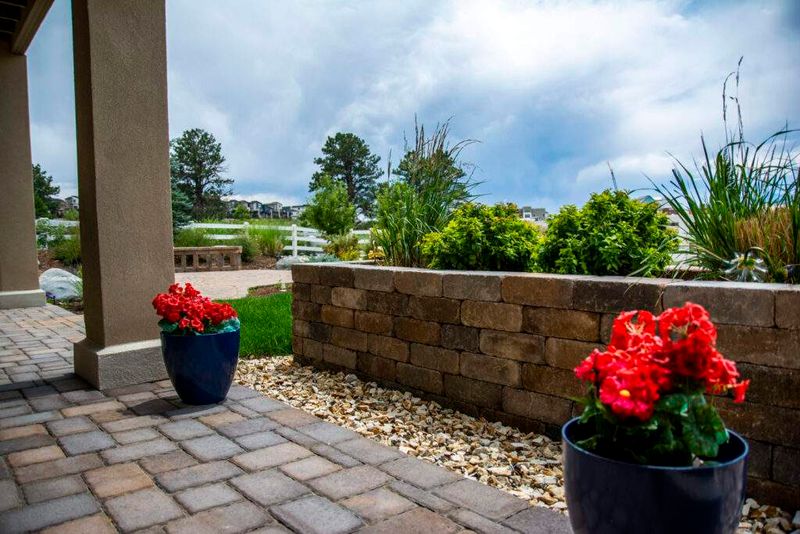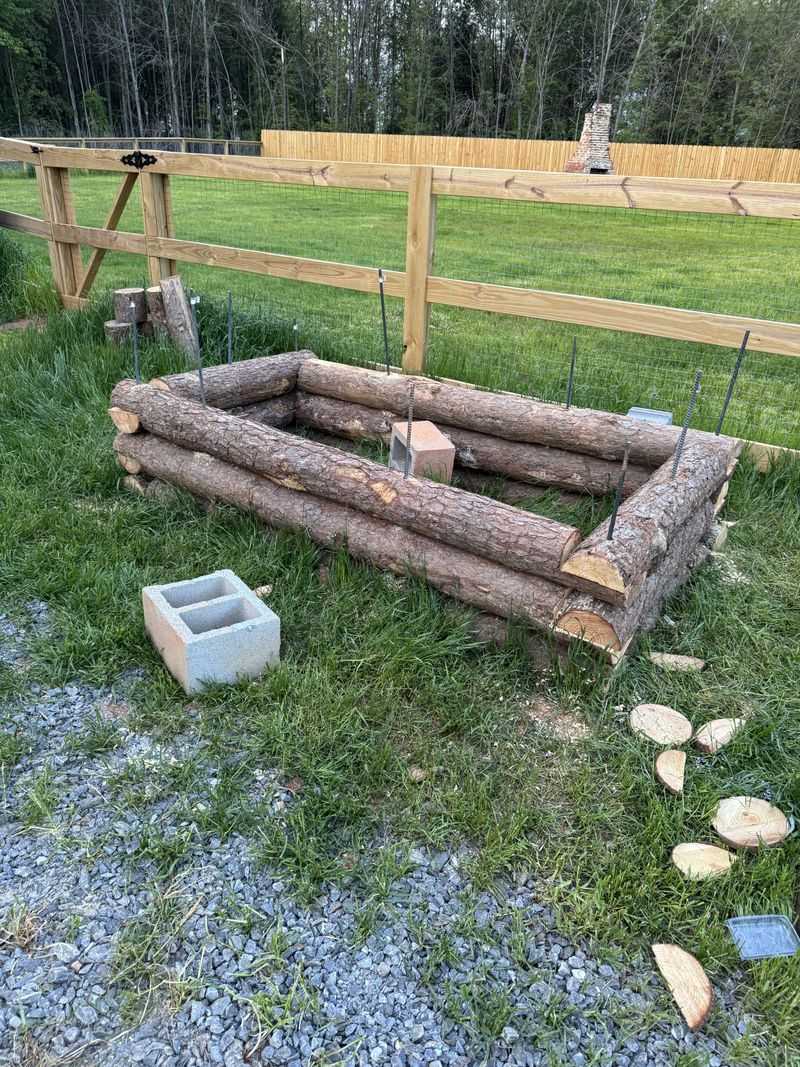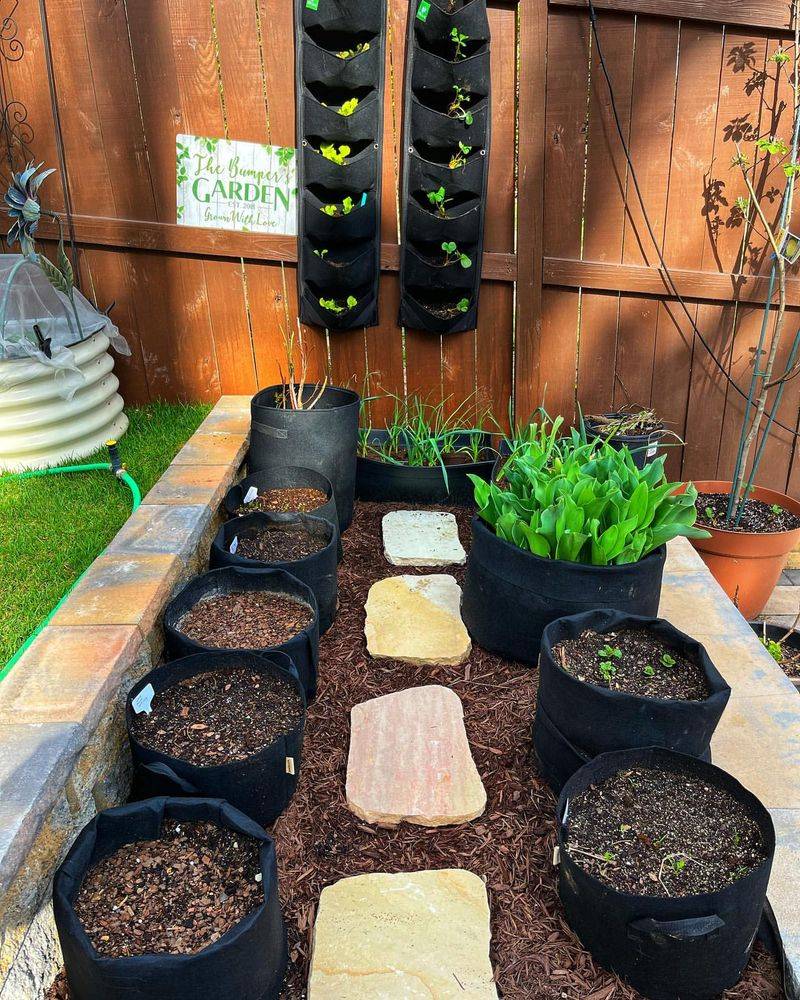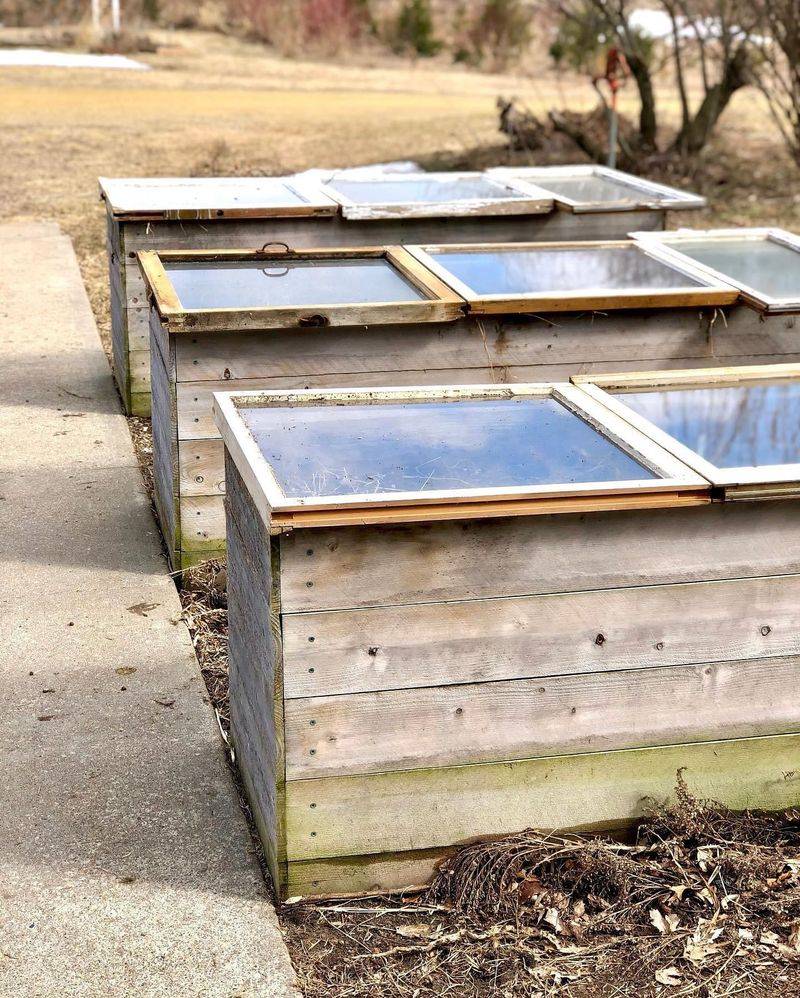Alabama gardeners are falling in love with raised bed gardens faster than kudzu covers a fence post. These elevated growing spaces solve many common gardening headaches – from poor soil quality to back strain – while adding beautiful structure to outdoor spaces.
With our hot, humid summers and clay-heavy soils, raised beds offer Alabama growers the perfect solution for growing everything from tomatoes to collards. The designs featured below have been spotted in community gardens, suburban backyards, and rural homesteads across the Heart of Dixie.
From simple wooden rectangles to elaborate architectural statements, these raised bed styles accommodate gardeners of all skill levels and budgets. As someone who’s built several raised beds in my Alabama backyard, I can attest that these designs aren’t just practical – they’re changing how we garden in the South.
1. Cedar Timber Rectangles
Natural cedar resists rot in Alabama’s humidity while looking handsome in any garden setting. The straightforward rectangular design makes efficient use of space and materials.
Many local gardeners choose cedar for its durability without chemical treatments. Cedar’s natural oils repel insects and moisture, extending the bed’s lifespan to 10-15 years even in our challenging climate.
Standard dimensions typically run 4’x8′, making them perfect for reaching across without stepping on soil. The neutral wood tone complements any landscape style.
2. Corrugated Metal Side Panels
Shiny, rippled metal panels create modern-looking beds that heat up quickly in spring, perfect for early planting in Alabama’s growing season. Paired with wooden frames, these beds blend industrial chic with garden practicality.
The metal reflects sunlight, helping plants thrive while extending the growing season. Unlike wood, metal won’t rot or attract termites – a significant advantage in our humid climate.
Local gardeners report these beds warming soil several weeks earlier than traditional designs, giving tomatoes and peppers a head start.
3. Keyhole Garden Circles
Imagine a circular raised bed with a narrow pathway extending to its center – that’s the keyhole design taking Alabama by storm. This clever layout maximizes growing space while minimizing the distance you need to reach.
Originally from Africa, keyhole gardens work brilliantly in Alabama’s climate. The center typically contains a composting basket where kitchen scraps and water get added, naturally feeding plants throughout the bed.
For folks with mobility issues, these beds offer excellent accessibility without sacrificing growing area.
4. Cinder Block Industrials
Budget-friendly and practically indestructible, cinder block beds are gaining fans across Alabama. The holes in the blocks create bonus planting spaces perfect for herbs or flowers.
Many gardeners appreciate how quickly these beds can be assembled – no tools required. Simply stack the blocks in your desired configuration and fill with soil.
In my experience here in Alabama, painting the blocks with exterior masonry paint transforms these utilitarian structures into colorful garden features that stand up to our intense summer heat year after year.
5. Wattle Woven Naturals
Flexible branches woven between upright stakes create these charming, biodegradable raised beds. Alabama gardeners have embraced this ancient technique using locally abundant materials like willow, dogwood, and young sweetgum branches.
The woven walls allow excellent air circulation while retaining soil. For areas with heavy clay, this breathing quality helps prevent waterlogging during Alabama’s notorious summer thunderstorms.
Though they eventually decompose, most wattle beds last 2-3 growing seasons, making them perfect for gardeners who enjoy changing their garden layout regularly.
6. Gabion Stone Cages
Wire cages filled with rocks create stunning, durable raised beds that double as landscape features. Alabama gardeners fill them with locally sourced stones, creating unique beds that complement our natural landscape.
Heat-loving plants thrive as the stones absorb daytime warmth and release it slowly overnight. This extends the growing season and provides ideal conditions for herbs like rosemary and thyme.
Unlike wooden beds, these stone structures improve with age as they weather, developing character while remaining functional for decades in our challenging climate.
7. Elevated Table Gardens
Standing waist-high on legs, these raised beds eliminate bending entirely – perfect for Alabama’s aging gardeners or anyone with back issues. The elevated design also deters ground-dwelling pests like rabbits and ground squirrels.
Many local gardeners incorporate these tables into patio spaces, bringing growing areas closer to outdoor living zones. The clean lines and contained soil make them particularly popular in suburban neighborhoods.
For seniors in Alabama’s community gardens, these accessible designs have extended gardening careers by years, allowing continued connection with the soil without physical strain.
8. Hugelkultur Mounds
Alabama gardeners are discovering this water-wise technique where beds are built over decomposing wood. The buried logs act like sponges, absorbing rainwater and slowly releasing it during dry spells.
Starting with a base of logs and branches, these mounds get layered with compost, leaves, and soil. The gradual decomposition creates self-fertilizing beds that require minimal watering even during Alabama’s scorching summers.
The slightly domed shape creates microclimates – perfect for planting different vegetables that prefer varying conditions, all within the same bed.
9. Southern Pallet Upcycles
Free wooden pallets transformed into garden beds represent Alabama ingenuity at its finest. Resourceful gardeners disassemble and reconfigure these shipping materials into rustic growing spaces with minimal investment.
Local businesses often give away pallets for free, making this an extremely budget-friendly option. The rough-hewn aesthetic fits perfectly with Alabama’s casual garden style.
When selecting pallets, experienced gardeners look for the HT stamp (heat-treated) rather than MB (methyl bromide), ensuring no harmful chemicals leach into the soil where food will grow.
10. Concrete Block Spirals
Arranged in graceful spirals, concrete blocks create eye-catching raised beds that serve as garden focal points. The spiral design maximizes growing space while creating different sun exposure zones within a single bed.
Alabama herb enthusiasts particularly love this design, placing sun-loving rosemary and thyme at the top while shade-tolerant mint and parsley thrive in lower sections. The blocks retain heat, extending the growing season.
Building these spirals requires no mortar or special tools, making them accessible weekend projects for gardeners of all skill levels across the state.
11. Children’s Storybook Shapes
Whimsical raised beds shaped like butterflies, flowers, or animals are capturing imaginations in Alabama school gardens and family backyards. These playful designs make gardening approachable and exciting for young growers.
School gardens across the state report increased student participation when traditional rectangles are replaced with creative shapes. The defined borders also help little feet know exactly where not to step.
Parents appreciate how these engaging designs encourage children to connect with nature and develop healthy eating habits by growing their own vegetables.
12. Cattle Trough Conversions
Metal livestock troughs repurposed as garden beds combine farm practicality with modern aesthetics. These ready-made containers need only drainage holes before filling with soil, making them among the easiest raised beds to set up.
The galvanized metal withstands Alabama’s humidity and resists rust for years. Their height (typically 2-3 feet) reduces bending and creates a strong barrier against burrowing pests.
Local gardeners often cluster several troughs of different sizes to create interesting garden layouts that can be rearranged seasonally or as growing needs change.
13. Brick-Edged Classics
Timeless brick borders create raised beds with Southern charm that complements Alabama’s historic homes and gardens. The thermal mass of brick retains heat, creating warmer soil conditions that extend the growing season.
Recycled bricks from renovation projects give these beds character while reducing costs. Many gardeners lay them in decorative patterns like basket weave or herringbone for added visual interest.
For me, these designs represent the perfect balance between formal and casual gardening styles, fitting beautifully in both country and urban Alabama landscapes.
14. Log-Cabin Corner Joinery
Timber beds with interlocking corners reminiscent of log cabins bring pioneer craftsmanship to Alabama gardens. The overlapping joinery creates exceptionally strong corners without hardware, perfect for deeper beds that hold significant soil weight.
Local woodworkers often teach this technique at community garden workshops across the state. The substantial appearance suits larger properties and rural settings where scale matters.
Alabama gardeners report these sturdy structures last 15+ years when built with rot-resistant woods like cedar, cypress, or locally sourced black locust.
15. Fabric Grow Bags
Oversized fabric containers create flexible, portable raised beds gaining popularity with Alabama apartment dwellers and renters. These breathable bags promote healthy root systems through air pruning while preventing overheating in our intense summer sun.
Available in various sizes from 10 to 100 gallons, they accommodate everything from herbs to tomatoes. When the growing season ends, they can be emptied, folded, and stored until next year.
The mobility factor makes these perfect for tracking optimal sun patterns as seasons change or when unexpected shade develops.
16. Reclaimed Window Frame Gardens
Old wooden window frames repurposed as cold frames atop raised beds extend Alabama’s growing season at both ends. The glass covers protect tender seedlings from late spring frosts and early fall chills.
Salvage yards and renovation projects provide an abundant source of these architectural elements across the state. Hinged to allow easy access, the frames can be propped open for ventilation on warm days.
During summer’s peak heat, Alabama gardeners remove the glass completely, then reinstall it as temperatures drop in fall, protecting cold-hardy greens well into winter.


